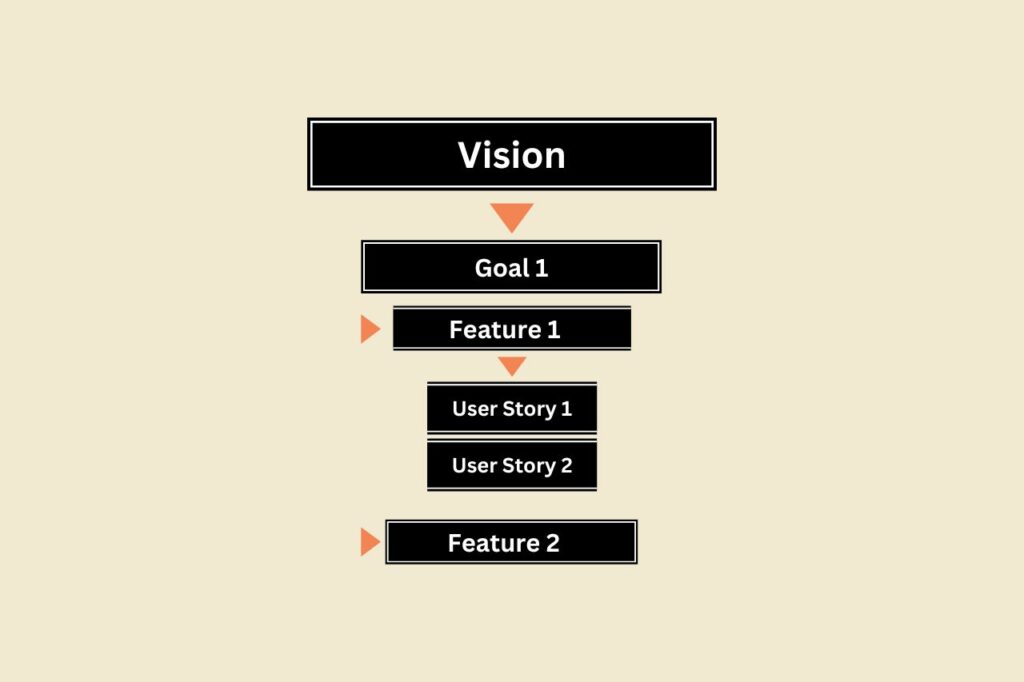Scrum is a framework that has over the years become synonymous with developing quality software products due to its flexible and adaptable approach.
This article will focus on the Product Backlog which is an essential Scrum artifact and how it is managed.
What is a Product Backlog in Scrum?
First of all, it is important to understand what the Product Backlog is and its purpose.
According to the Scrum Guide, the Product Backlog is one of the three Scrum artifacts. The other 2 scrum artifacts are the sprint backlog and the product increment.
Scrum artifacts represent value, and are designed to capture key information that the scrum team needs to measure the project’s progress.
The Product Backlog is an emergent ordered list of what is needed to improve the product that is being developed.
For any work to be undertaken by the Scrum team and for the functionality of the product, the Product Backlog is the single source.
The Product Backlog is a list of all the desired or required functionality, requirements, and features of the software product to be developed.
This list which forms the Product Backlog is prioritized or ordered according to the features’ importance, the work required, or how soon the feature is needed.
The features and requirements in the Product Backlog include user stories, technical debt items, and enhancement requests.

Who Makes the Final Decision on Ordering the Product Backlog?
While any member of the scrum team can order the Product Backlog, the final decision of the Product Backlog ordering is the Product Owner.
The Product Backlog is a list of all the desired features and functionality of a software product to be developed, and it’s important to order the Product Backlog items based on priorities.
It then becomes easier to execute the project work over various sprints in order to achieve the desired Product Goal.
The Product Owner is ultimately responsible for effective Product Backlog management and makes the final decision on ordering the Product Backlog so as to maximize the value of the product.
While the Product Owner can delegate these responsibilities to members of the scrum, the accountability of the Product Backlog management however rests solely with the product owner.
Read Also: 8 Incredible Benefits Of Nearshore Agile Software Development For Your Business
When is a Product Backlog Created?
The Product Backlog is created before the first sprint. It is to align with the Product Goal and is to be managed solely by the Product Owner.

Who Creates a Product Backlog Item’s Estimate?
When it comes to creating a Product Backlog estimate, the responsibility lies with the Product Owner.
Product backlog management remains the product owner’s job in order to maximize the value of the product and achieve the product goal.
The estimate includes the cost of delivering the Product Backlog item, when the Product Backlog item needs to be completed, and what work needs to be done first.
However, when it comes to actually creating these estimates, the development team and stakeholders are expected to bring input.

What is the Product Owner responsible for?
The product owner is an essential member of a scrum team. They are responsible for the management of the Product Backlog and are to ensure that it is up to date in terms of priorities and aligned with the product goal.
The product owner represents the company or user and is responsible for working with the consumer to determine which features will be included in the product increment.
Read Also: How To Incorporate Agile Into Your company’s Initiatives

When is a Product Backlog Item Considered Complete?
When it comes to implementation, a Product Backlog item is considered to be complete when the product increment is usable and releasable to the end users.
Product Backlog Example
The Product Backlog is a scrum artifact that is key to achieving the product goal and driving development in the desired organizational direction.
To structure a Product Backlog, you need to know and understand what every member of the scrum team wants from it.
Team members’ priorities are the user stories and tasks in the Product Backlog that they can work on in sprints to achieve sprint goals that fit into the whole product goal.
The product owner is focused on the product’s features and functionality and how to prioritize and manage the Product Backlog.
The scrum master is focused on the deployment of scrum practices according to the scrum guide within the scrum team and organization.
A Product Backlog can be structured around team organization, processes, goals, and other criteria. Each structure type has its merits.
The example in the diagram below is a goal-driven Product Backlog as the product goals and visions are decomposed into sub-features.

When the Product Backlog is structured around the product goals, it enables the team to stay focused on the desired business value.
With these high-level goals, the work is more measurable and accountable as using rapid feedback loops enables the team to know if they are working in the right direction of the product goals or not.
This way, the team can quickly adapt to the desired direction.
Product Backlog Item vs. User Story
It is common for people in the agile development domain to take user stories as a synonym for Product Backlog items. While they are related, they are however not exactly the same thing.
While a user story is a Product Backlog item, a Product Backlog item is not necessarily a user story. A user story is a type of Product Backlog item.

How much of the Sprint Backlog must be Defined?
During the sprint planning event. the sprint backlog is defined enough so that the scrum development team can create the best possible forecast, and start the first days of the sprint while refining the sprint backlog as the sprint progresses.
Who Determines How Many Product Backlog Items for a Sprint?
When it comes to how many Product Backlog items for a sprint, that is entirely up to the development team. They are to select Product Backlog items from the Product Backlog that can be completed within a sprint.
This estimate is based on their capabilities, the duration and complexity of the item, and other factors. The Product Backlog items are a part of the sprint backlog which is a plan for and by the scrum development team.
The sprint goal (the why), the selected Product Backlog items (the what), and an actionable plan to deliver the product increment within the sprint (the how).





